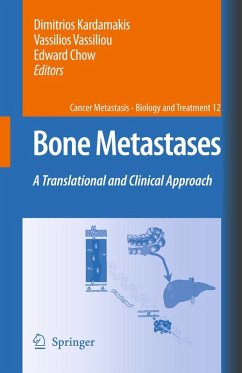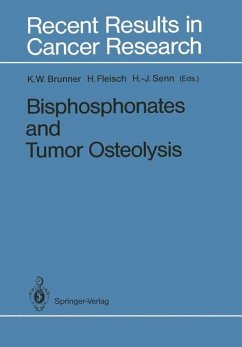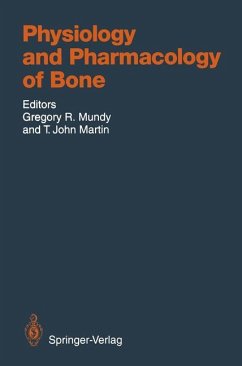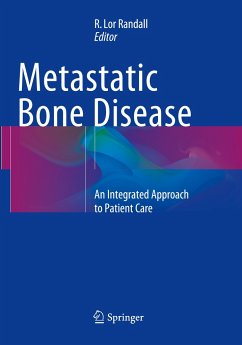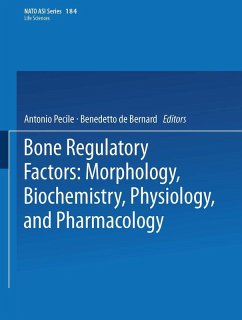
Bisphosphonates in Clinical Oncology
The Development of Pamidronate
Versandkostenfrei!
Versandfertig in 6-10 Tagen
76,99 €
inkl. MwSt.

PAYBACK Punkte
38 °P sammeln!
The book gives an overview of the clinical developments in the use of bisphosphonates in clinical oncology. The first part pre sents the composition, physiology, and pathophysiology of bone. Next is a section giving insight into mechanisms of bone resorp tion, bone formation, and bone remodeling, a field in which I was most influenced by O. L. M. Bijvoet and H. Fleisch. The sec ond part summarizes the pharmacological treatments for disor ders of bone remodeling. The clinical aspects of tumor-induced hypercalcemia and its management are described in detail, in cluding our first prospective rand...
The book gives an overview of the clinical developments in the use of bisphosphonates in clinical oncology. The first part pre sents the composition, physiology, and pathophysiology of bone. Next is a section giving insight into mechanisms of bone resorp tion, bone formation, and bone remodeling, a field in which I was most influenced by O. L. M. Bijvoet and H. Fleisch. The sec ond part summarizes the pharmacological treatments for disor ders of bone remodeling. The clinical aspects of tumor-induced hypercalcemia and its management are described in detail, in cluding our first prospective randomized crossover study testing pamidronate versus mithramycin. The bisphosphonates were in troduced in clinical oncology by endocrinologists. The same was true for our institution in 1986, when P. Burckhardt proposed testing pamidronate in the above-mentioned trial in his institu tion (CHUV) and in our department. The impressive results ob tained in the hypercalcemia trial stimulated our interest, and we actively investigated the use of pamidronate to counteract osteo lytic bone destruction in cancer patients. These investigations are presented and discussed in the third part. They represent the interdisciplinary work involving many co-workers of the Depart ment of Internal Medicine C and other institutes of the Interdis ciplinary Oncology Center St. Gallen (IOSG), which I was privi leged to chair for 10 years. Initially, a pharmacokinetic study was performed in order to optimize and facilitate the administration of the drug to patients with malignant osteolytic bone disease.






